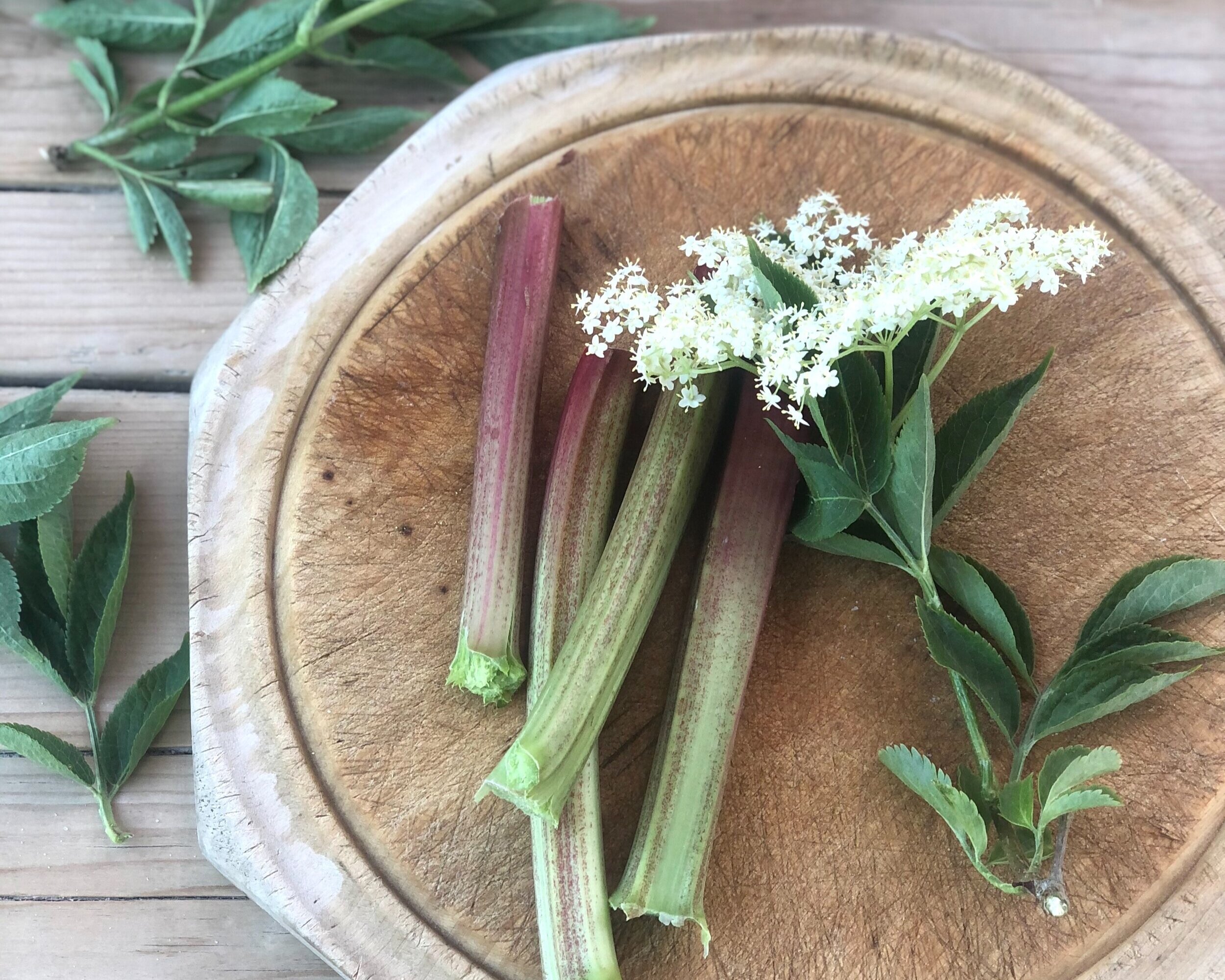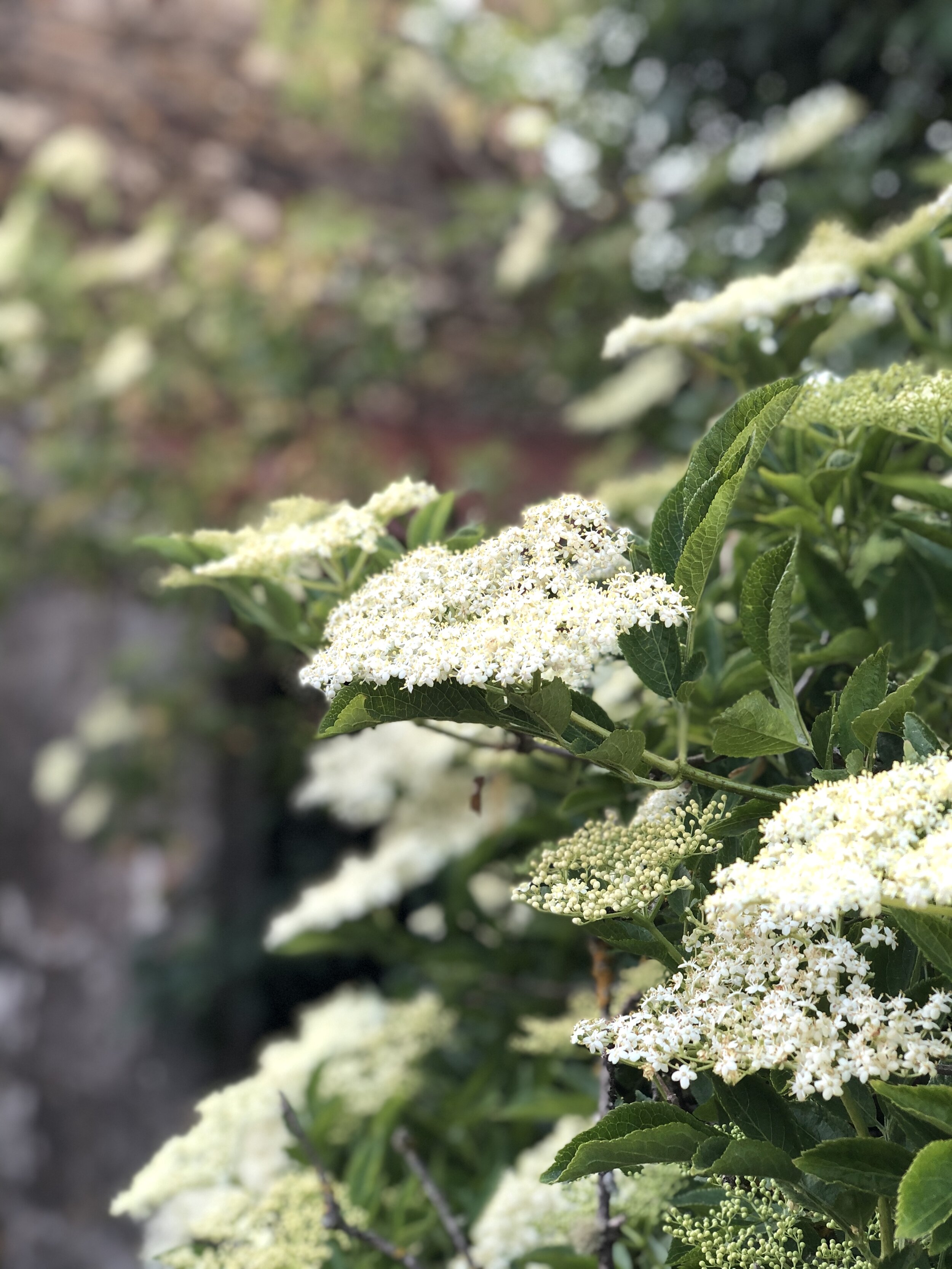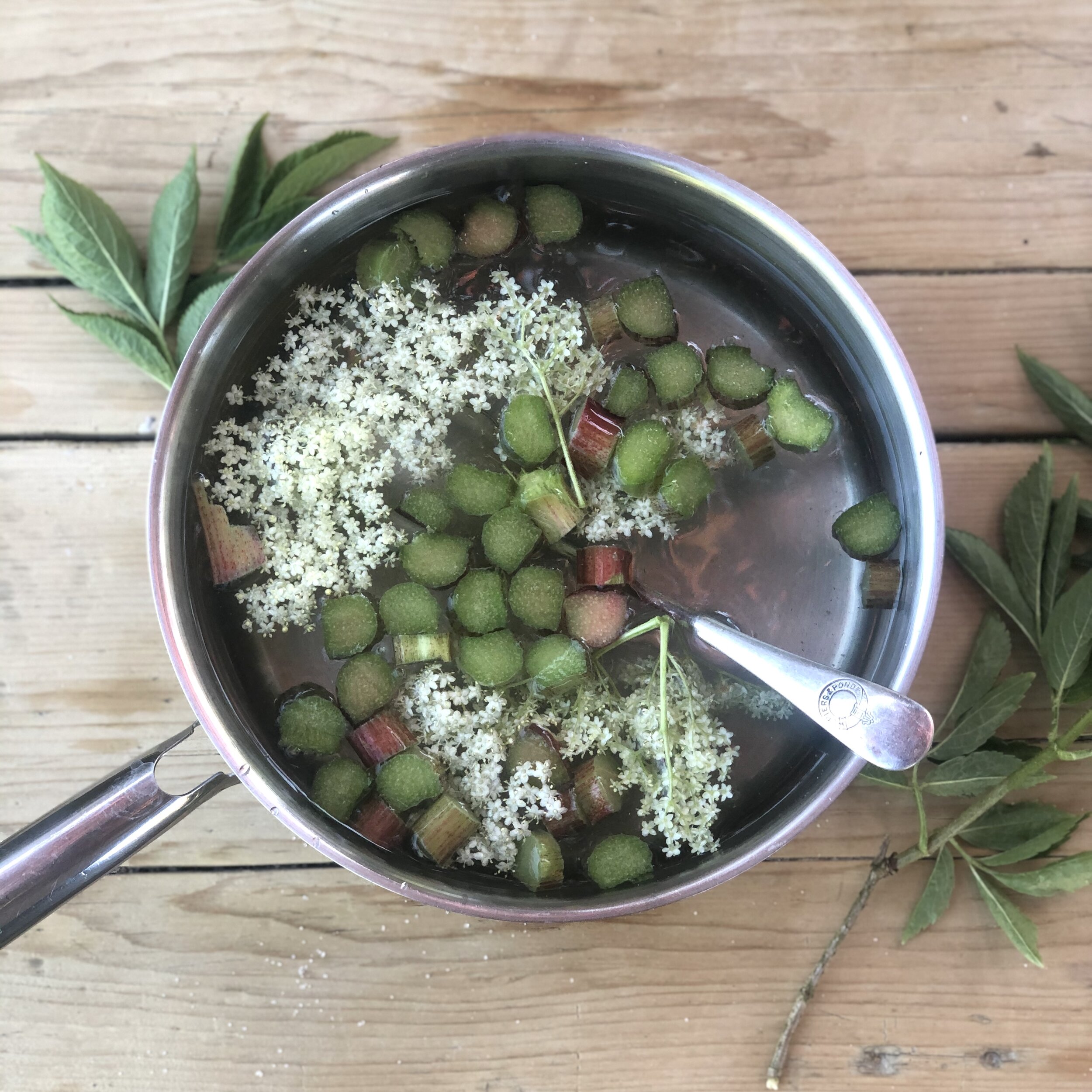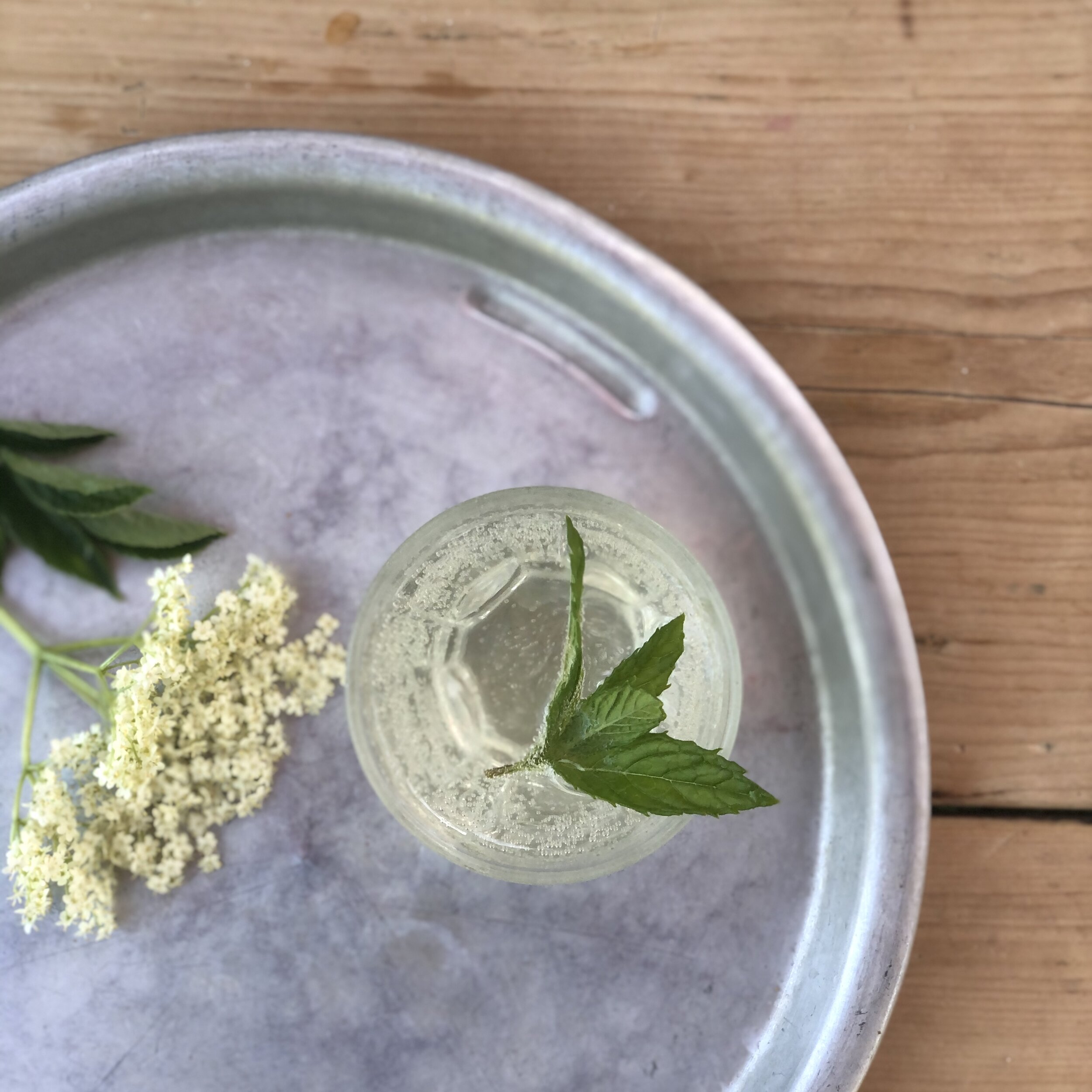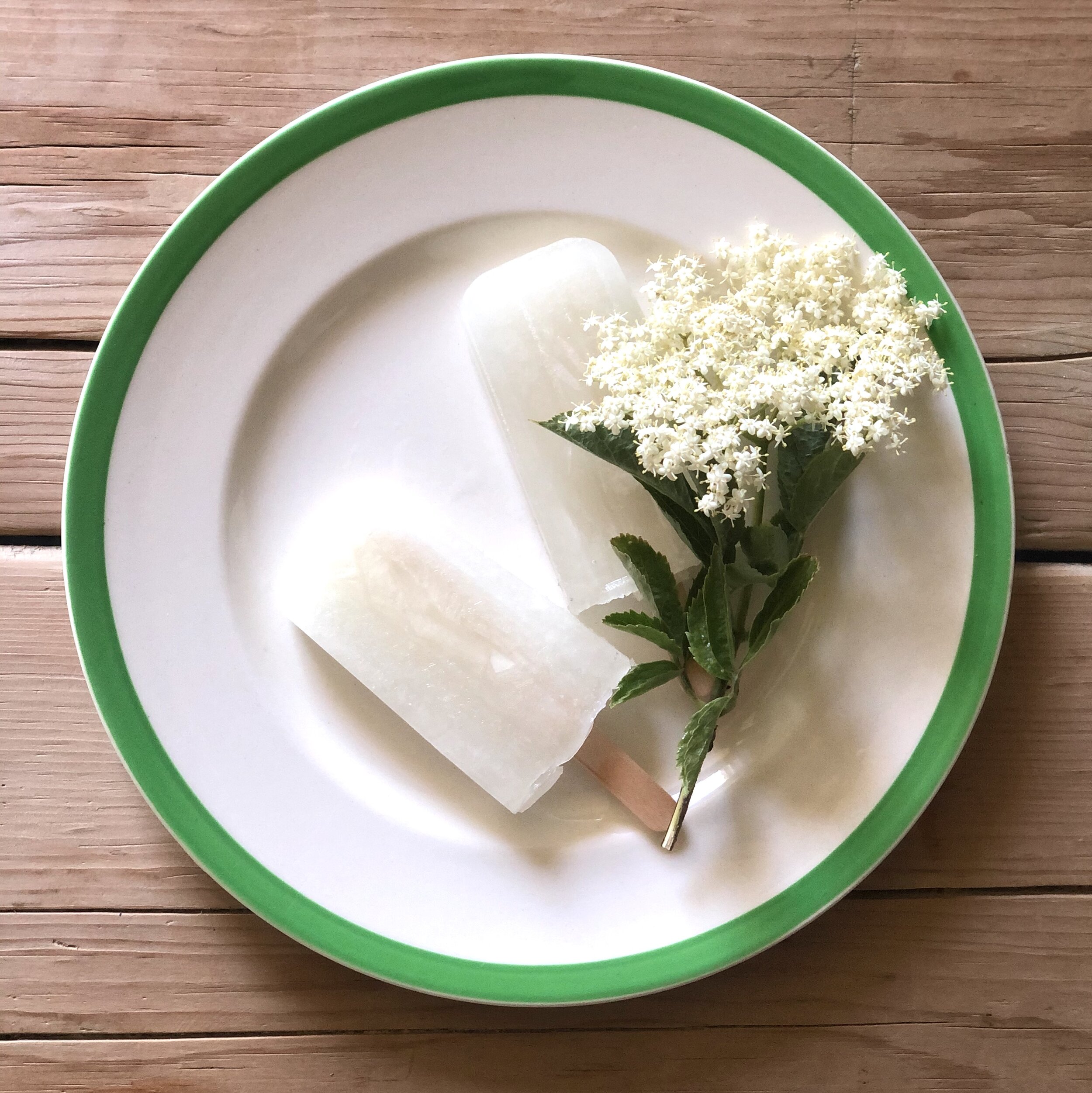The arrival of summer is always met with great excitement in our household as the first elderflowers emerge from the hedgerows. Elderflower cordial is a seasonal family ritual, but this year I wanted to try out some new ideas. Firstly, in my exploration of seasonal eating I wanted to pair elderflower with an alternative to lemons, something grown here in Cornwall that could be used to enhance and ground the heady notes of the flowers. My trusty friend rhubarb is still growing in the garden so I had a play, and have loved matching these two home-grown ingredients within the recipe.
I also wanted to try alternatives to using processed sugar within the cordial as I find the recipe I normally use - a family heirloom passed down from my mother - is utterly delicious yet somewhat overwhelming as someone with a savoury palette. So instead I’ve used local honey to soften the flavours and help to cook down the rhubarb initially before leaving the mixture to steep. I love the versatility of this cordial recipe, which we are using three ways:
Lollies - my kids expect that the first jug of cordial will be poured into lolly moulds ready for the next hot day. I find it’s great to have home-made, sugar free treats at the ready.
Morning cleanser - I begin each day right now with a warming drink of 1/3 of a cup of cordial, 2/3 cup boiled water then top with a mint leaf to energise.
Aperitif - add sparkling water and a small handful of wild strawberries as an early evening spritzer.
This year the elderflowers arrived early due to the unseasonably warm spring. They are still available right now however if you’re struggling to find flowers that are still light coloured without browning, look on the north side of hedges or wooded areas where the elderflowers don’t receive as much early light, and are more protected.
I hope you enjoy this version of a quintessential summer drink!
Recipe: Elderflower & Rhubarb Cordial
Note that the recipe is made over a couple of days - on the first day you gather the ingredients and begin the process of steeping. Two days later you strain the mixture then pour into lolly moulds (if using) and bottles - so make sure you have bottles ready and sterilised for two days after steeping.
Equipment
Large metal pan
Sieve
Large jug
Lolly moulds (optional - if you wish to make lollies using some of the cordial)
Sterilised bottles - after filling lolly moulds I made 1 x litre bottle with this recipe, if not using lolly moulds perhaps use 2 x 1 litre bottles or 1 x 1 litre and 2 x 500ml bottles, I always like to sterilise more than I’m likely to use rather than find myself with excess cordial.
Ingredients:
6 elderflower heads
4 rhubarb stalks
6 tbsp honey
2 litres water
1 tbsp white wine vinegar
Serving suggestions: sparkling water, sprig of mint, handful of wild strawberries or boiled water for a warm drink
Method:
Pick the elderflower heads, choose ones that are bright white with open flowers. Give a shake to remove any insects from the flower heads.
Wash the rhubarb and chop into small pieces
In a large pan, place the honey in the bottom and slowly melt then add a splash of water and the rhubarb. Gently warm the rhubarb for approx 8 minutes until the shape has softened, releasing the flavours.
Add the water and continue to gently heat for a couple of minutes until the honey has dissolved.
Add the white wine vinegar and mix well.
Remove from heat and allow to cool then add the elderflower heads, place the lid on top of the saucepan and leave to steep for 48 hours, stirring a couple of times a day.
The following day when you are ready to bottle give a good mix again then strain into a jug - place a sieve over a wide-topped jug and ladle in spoonfuls of the cordial. Pour from the jug into your lolly moulds and/or sterilised bottles.
Keeps for approx 2 weeks in the fridge
